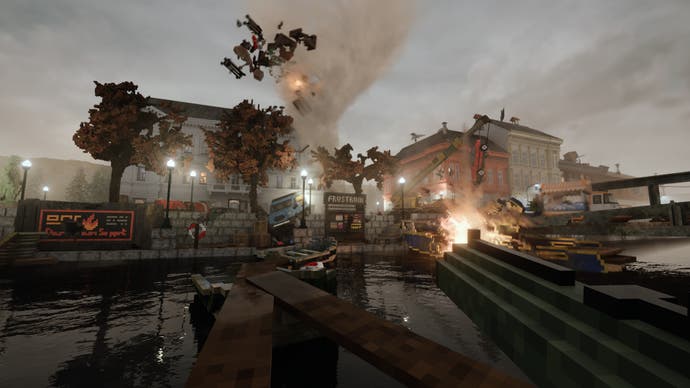Teardown is a visual, physical showcase on PS5 and Xbox Series consoles
Original and distinctive - and not to be missed.
Looking for something different, original and distinctive? After years available on PC, Teardown has finally appeared on the current generation consoles - and by and large, it's terrific. As an extra bonus, it's currently one of the free games on the PlayStation Plus subscription package - and I encourage you to check it out.
Teardown is a fascinating game from the Digital Foundry perspective as its rendering and simulation systems are quite different from the vast majority of titles out there. Like many of the most iconic games of the last 30 years, the core tech behind Teardown is the main enabler of its gameplay systems. At the core of the game are the voxels which make up the game world. It gives the game its low-fi/hi-fi aesthetic, where each and every object in the game you see has a deformed Lego-esque look to it, with all detailed comprised of blocky bits arranged into recognisable shapes we all intuitively understand, Minecraft-style.
Those voxels are not just show, however, as they drive and enable how the game is rendered and how it is played. When combined together into the shapes and objects of the game, each voxel has weighted constraints to it and distinct material properties. So, different objects react differently to different physical forces: some, like wood, come apart into tiny pieces easily with the swing of your hammer, while others like certain metals are more robust and require more violent or explosive treatment to break apart.
The way these different materials react to physics forms the core gameplay loop, where you destroy and manipulate the voxel materials in the game to achieve some goal. In the single-player mode, this can be simple: such as wrecking a given house as quickly as you can, a la Blast Corps if you ever played that, where your choice of destructive implement is key to getting the best score.
The gameplay can be more complex, however. For example, in another mission, the player has to rapidly disconnect three security systems in different parts of the gameplay space before the timer runs out, the catch being that these security systems are separated by walls and a lot of traversable distance. So, cunning use of the voxel-based physics system is needed: knocking down walls, demolishing obstacles, setting up stackables to make a clean route to victory.
It's a game where the physics drive the gameplay and just seeing all of the game's systems play out is a joy in itself: wood objects catch fire easily when subjected to heat or explosions and there is an entire propagation system where it spreads slowly to other flammable objects - it is neat to look at and interact with due to the stellar rendering.
The smoke and flame from the fire is volumetric and physicalised itself, so you can see it snake its way through a building that is on fire, and it collates in areas where it is trapped like in ceilings and corners. And if you apply force to it, you can see it realistically be pushed around to collide with other things - it just looks right in a way many games never achieve in spite of the stylised brick look the visuals otherwise have. Most other games just use 2D textures that face the camera and are completely static - a purely visual thing - yet here it is an entire physicalised system that is fully built into the gameplay and even looks quite a bit better I would say.
The voxel physics are just one half of the game's technically distinctive style. The other half is how the rendering is achieved. Teardown's primary visuals are achieved by intensive voxel tracing and very little in the way of standard rasterisation techniques. There are a lot of elements here that have a ray traced quality to them, like reflections for example. The game ray marches specular occlusion to give a kind of darkened reflective look on objects that is very realistic.
This technique - which eschews hardware ray tracing - makes it so that objects rarely ever look like they are glowing and out of place, but to ensure speed, reflections only get colour via screen-space information. Reflections become grey-toned if the objects in them move out of view. This technique applies to direct lighting too, as well as ambient occlusion, though Teardown doesn't deliver full-on global illumination.
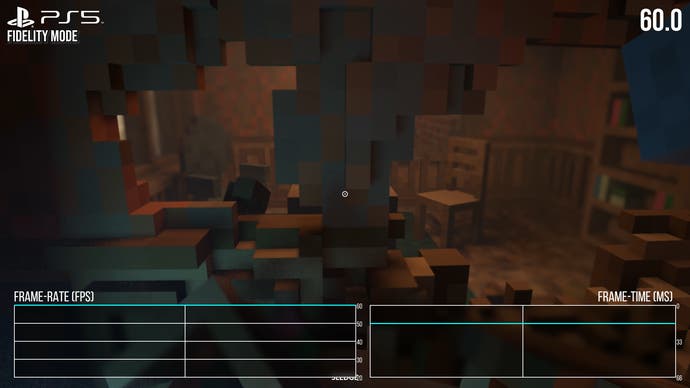
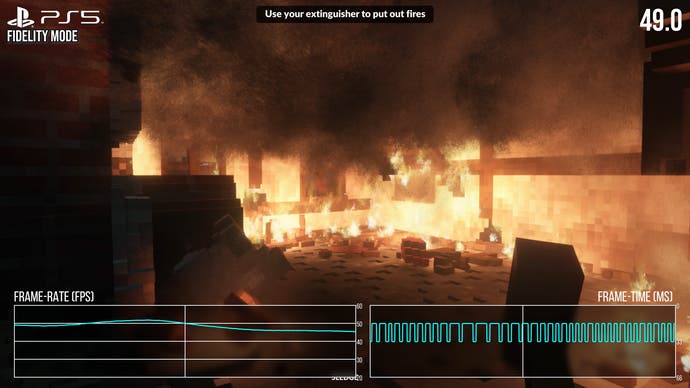
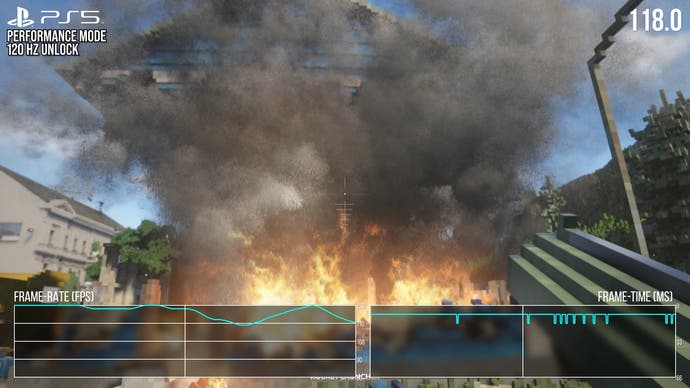

That's all about offering up solid performance, where Teardown works very well overall, bar some odd issues on Xbox Series consoles (specifically Series X). In the fidelity mode, Xbox Series X and PlayStation 5 run the game internally at 1620p, targeting 60 frames per second - and based on comparisons to PC, it's running with graphical quality settings maxed out.
By comparison, Series S runs the game with an internal resolution of 864p, with only one rendering mode. The truth is, it looks rather blurry and rough, but at least it targets 60 frames per second and does a creditable job of staying there. PS5 and Series X also have performance modes which run at 1080p internally, which is just about enough to service the game's visual aesthetic. This can run with both 60fps and 120fps targets on the higher-end consoles.
PlayStation 5's fidelity mode is interesting as it's quite performant for a game doing so much tracing, mostly sticking to 60 frames per second. However, frame-rate can buckle when you start getting into more intense destruction or where there's a lot of smoke and fire on-screen, sometimes into the 40s. This can drop still further when using the game's sandbox modes or other gameplay types where you have more extensive access to destructive tools. The 1080p performance mode runs standard gameplay scenarios without issue, which makes sense as the game is cutting the total resolution in half - and that aids performance a lot. However, I find performance mode most interesting in its 120fps configuration, where simpler gameplay delivers full frame-rates, with only greater destruction causing dips beneath to the 90-100fps area. This is totally reasonable bearing in mind the load on the hardware.
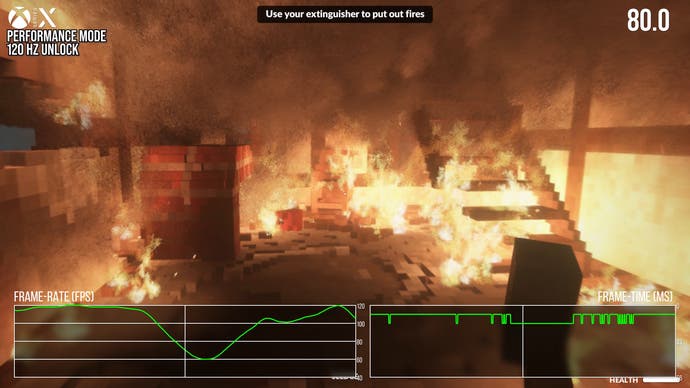
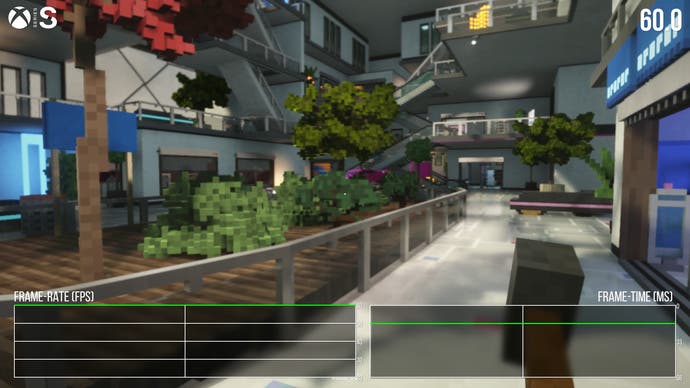
Xbox Series X has an issue, however, and it's not related to the capabilities of the machine - but rather the developer's choice to swap out PS5's triple-buffer v-sync for double-buffer. Instead of maxing out performance, double-buffer sees performance drop from 120fps to 60fps to 30fps in hard 'jumps' whenever the system is under load. The judder is egregious and not really acceptable. We know it's not a hardware problem simply because turning on system-level variable refresh rate solves the problem completely - but hopefully the developers will introduce triple-buffering to Xbox too as right now, the sudden jerkiness just looks wrong. Series S may well be double-buffering too but it's hard to tell as it does such a good job of adhering to the 60fps target.
Summing up, Teardown on consoles is largely a success: it generally plays great, looks great, and it also loads really quickly on all platforms, so you can get in and out of play very quickly without much downtime. Beyond fixing the v-sync issues on Xbox I would like to see some other smaller tweaks to the game, for one: it would be nice for one to have the option for inverted camera controls as some people play that way and the game seems to lack that option.
Another thing I would like to see would be native HDR as the game would look great with it, but given how that is not implemented on PC, I doubt we will see it any time soon. Even so, Teardown comes highly recommended on Series S and PS5 - and assuming the Series X version gets patched (or you have VRR capabilities), that version should be equally as terrific.
